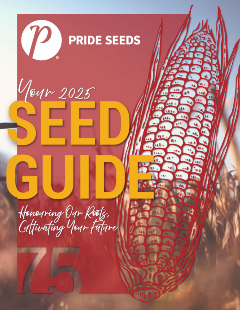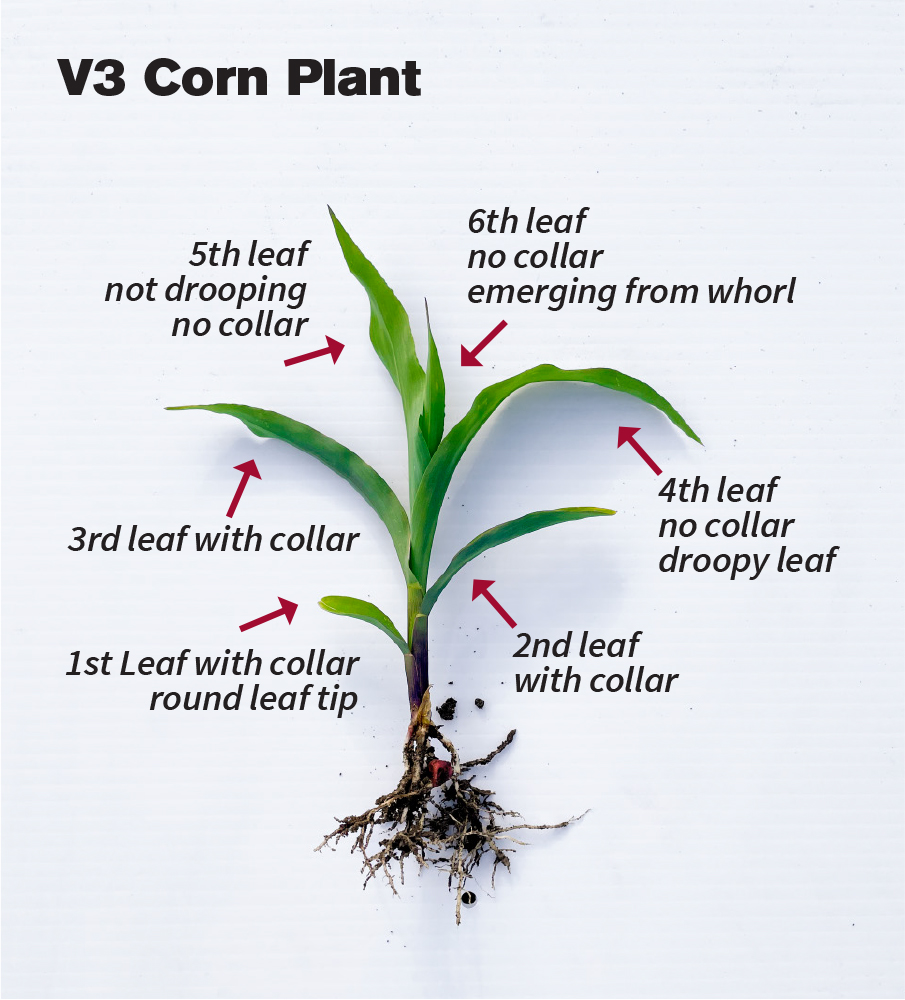___________________________________________________________________________________________________________________________________________

2024-2025 PRIDE Seeds Product GuideYou can find all of our products on the website, including supporting performance data and create your own personalized guide called My Guide. You can also download the digital version of our printed product guide which includes product comparison charts. |
Corn Growth Stages - Reproductive Stages / Grain Fill
Corn growth stages are divided into two – vegetative growth and reproductive growth. Vegetative growth begins with emergence and ends with tassel emergence. Reproductive growth begins quickly after tassel emergence and ends with physiological maturity. This newsletter will focus on the six stages of reproductive growth/ grain fill (R1 – R6).
Once corn plants have entered the reproductive phase of growth, the plant has reached is maximum height and is now focusing on grain development. Remember that ear girth (number of rows) and ear length (number of kernels per row) has been determined by environmental and management conditions during the vegetative stage, so the main objective during the reproductive stage is maximizing kernel fill.
R1: Silking Stage
Silking is the first growth stage, immediately following tassel emergence. To understand the importance of R1, it is important to know how pollination works – here is a quick summary:
- A corn tassel sheds several million pollen grains over five to eight days, with peak pollen shed occurring on day three.
- Once the tassel has begun to shed pollen, silks will emerge from the tip of the ear husks. One silk from each ovule (unfertilized kernel) on the ear will emerge. Pollen will land on a silk, germinate, and develop a pollen tube to penetrate the silk and elongate to the ovule. Silks will continue to grow until the kernel has been fertilized.
- The pollen tube carries half of the genetic material and will allow for fertilization of ovule, resulting in a fertilized immature kernel.
- Once the ovule is fertilized, the silk will detach from immature kernel, turn brown and die off.
During R1, the plant is extremely sensitive to stress. Extreme heat and drought can cause silks to dry out quickly and poor pollen viability resulting in poor pollination leading to less kernels per ear.
R2: Blister Stage
During R2, kernels are accumulating starch and appear white with a clear fluid. Silks are turning brown and rapidly drying out following fertilization. Resources from the leaves are beginning to be relocated to the developing ear.

R3: Milk Stage
At R3, kernels are yellow with a white, milky filling due to starch accumulation in the kernel. Good plant health and active photosynthesis during R3, sustains potential for kernels to have good size and test weight. Once again, rapid grain fill is occurring during the stage. Kernels that have aborted or failed to be fertilized will be apparent at this stage and the number of kernels per ear number is set for the most part. Stress during the following stages may reduce carbohydrate accumulate.
R4: Dough Stage
During R4, the white milky kernel filling is becoming thicker and pasty as kernels continue to accumulate starch. Kernels are gaining consistency and size and the outer edges of the kernel are becoming firm. At the end of the R4 stage a few dents may appear in the kernel crown. A killing frost during R4 may cause 25-40% yield loss. The cob has now developed its red-pinkish colour.
R5: Dent Stage
During R5, many kernels have formed a dent on the kernel crowns. The kernel crown has developed their characteristic shiny, darker yellow mature kernel colour. A hard white layer of starch is apparent at the top of the kernel – this is commonly referred to as the milk line. The milk line separates the solid starchy area of the kernel (beginning at the crown) from the liquid milky area of the maturing kernel. During R5 the milk line will progress towards the base of the kernel.
Silage Side Note: Optimal silage harvest is usually the later half of the R5 stage – R5.5 – R5.8 depending on the hybrid and conditions. At R5.5 the milk line is approx. 50% compared to R5.8 where the milk line is closer to 75% of the way to the kernel base. Harvesting when whole plant moisture is approx. 65% (35% dry matter) allows for greater success for packing, ensiling and storage.
R6: Physiological Maturity
R6 has been reached once the kernel has filled with starch and a black layer has formed at the base of the kernel. Once the black layer has developed, kernels have achieved maximum dry weight. Kernel moistures will range between 30-35%. Moisture loss from kernels will continue to allow for suitable harvest threshing and lower kernel moistures. Severe stress at R6 will have little impact on grain yield but can affect stalk integrity and harvest ease.
THE PRIDE SEEDS ADVANTAGE
Farming is one of the most demanding industries in the world, subject to a variety of factors such as time, weather, and global pressures. You know this every time you look out the window and think about the field in front of you. Growers and dealers deserve an advantage: The PRIDE Seed Advantage.
LEARN MORETHE PRIDE SEEDS ADVANTAGE
Every year PRIDE Seeds works hard to produce leading-edge products that enable success where it matters most, on your farm. Our dedicated team strives to provide sales expertise, agronomy support, quality production, and service tailored to meet your needs.
LEARN MORE
-7.png?sfvrsn=87920db3_3)

Leave a commentOrder by
Newest on top Oldest on top